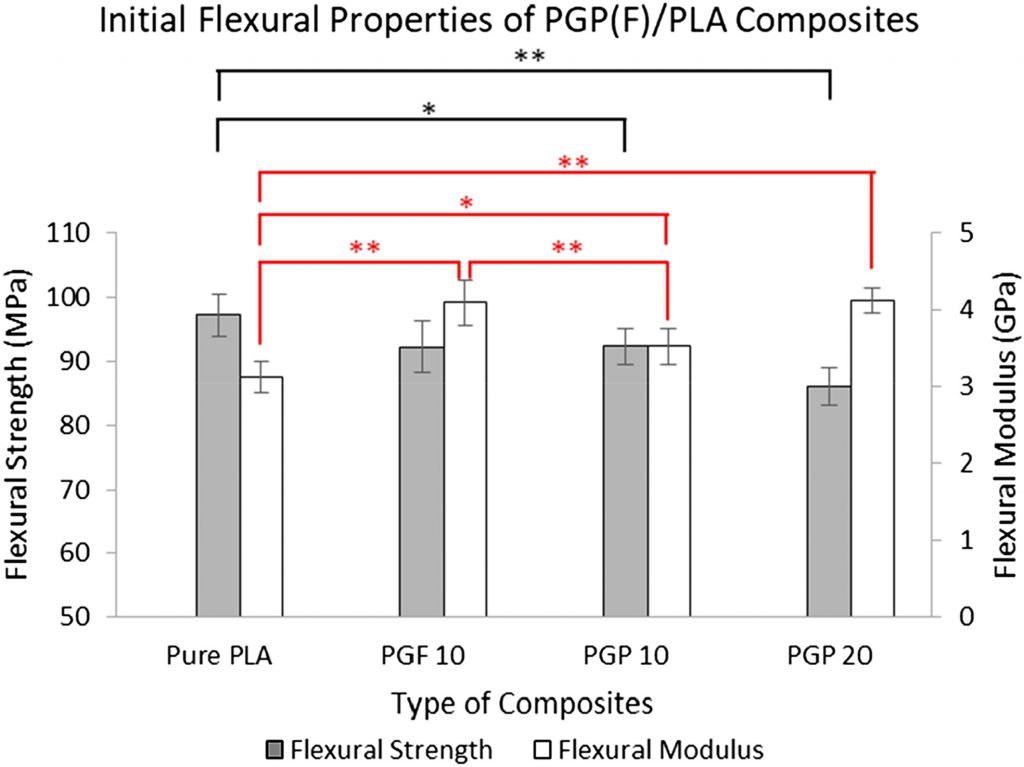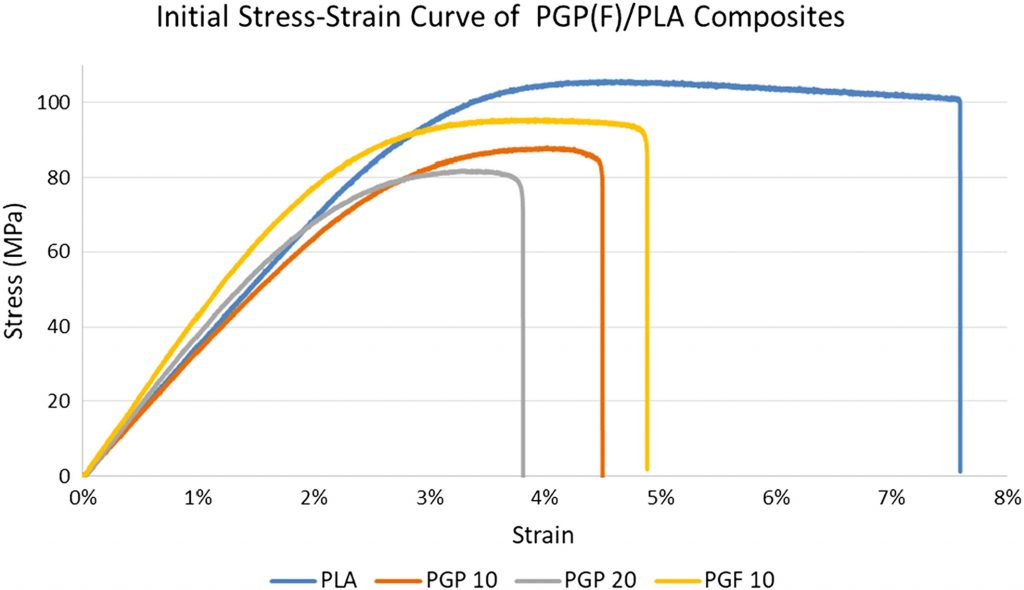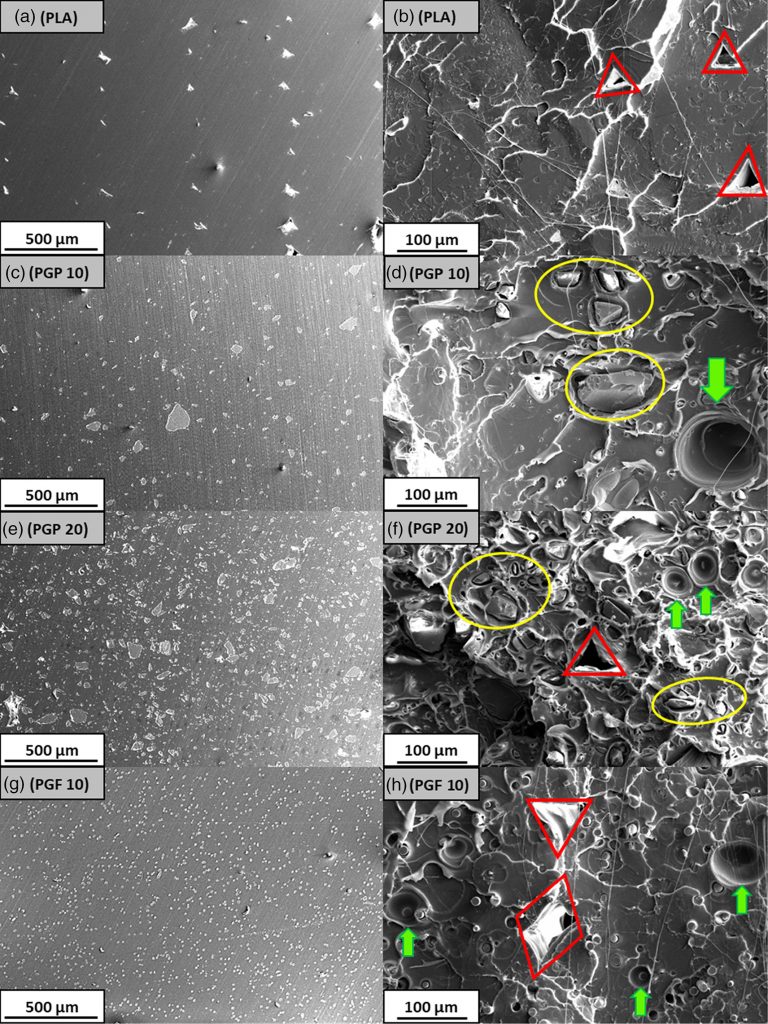 In ‘Mechanical properties and in vitro degradation behavior of additively manufactured phosphate glass particles/fibers reinforced polyactide,’ authors Lizhe He, Jiahui Zhong, Chenkai Zhu, and Xiaoling Liu explore a new level of material for 3D printing with phosphate glass/polylactide (PG/PLA) composites for use in medical applications such as fabrication of customized bone fixation plates for repairing fractures.
In ‘Mechanical properties and in vitro degradation behavior of additively manufactured phosphate glass particles/fibers reinforced polyactide,’ authors Lizhe He, Jiahui Zhong, Chenkai Zhu, and Xiaoling Liu explore a new level of material for 3D printing with phosphate glass/polylactide (PG/PLA) composites for use in medical applications such as fabrication of customized bone fixation plates for repairing fractures.
While bone regeneration is an area of great interest in 3D printing and additive manufacturing, so is the more common element of healing breaks, as researchers continue to look for better ways to improve the process—often accompanied by a range of bone fixation plates, screws, pins, and rods. Materials are key, along with integrity in design. Implants must be biocompatible, but the process is seamless when they are biodegradable too, thus eliminating the need for surgery.
The materials were tested for suitable mechanical properties as well as in vitro degradation behavior after creating models designed with PTC Creo Parametric, which were then imported into Simplify3D and the PG/PLA composites were 3D printed on an Ultimaker 2+. With the ability to fabricate complex geometries, the researchers could also control the level of porosity for bioprinting and tissue engineering purposes.
“Comparisons were made with PLA, and PLA reinforced with different loadings of PG particles (PGPs) as well as composites with reinforcements of different geometries [PGPs or milled phosphate glass fibers (PGFs)].”
The aim was to evaluate the AM composites as fracture fixation plates. A three-point bending test was performed, along with in vitro degradation for examining the strength and hydroscopy of the composites. There was a pH value check, along with dynamic mechanical analysis, and fiber length and laser particle size analysis. Both microscopy and statistical analysis were performed also.

Initial flexural properties of the FDM fabricated PLA, PGP/PLA, and PGF/PLA composites. Error bars represent standard deviation. Significance was marked with: * (p < 0.05, n = 5), ** (p < 0.01, n = 5) in black (strength) and red (modulus).
In continuing to compare with PLA specimens, the authors noted the following:
- Improved flexural modulus
- Reduced flexural strength
- Reduced strain at break
- Intensified effects with increased PGP loading

Typical stress–strain curves of the three‐point bending test of the FDM fabricated PLA, PGP/PLA, and PGF/PLA composites.
“Embrittlement and strength reduction are associated with of stress concentration and low interfacial strength. It is likely here that the stress concentration effect was augmented by the incorporation of particulate with sharp corners. With increased filler loading, stress concentration sites also increased and led to more pronounced strength reduction and the same effect on strain at failure,” noted the authors.
Here, the average fiber length was 54 μm, and median and mode of fiber length were even lower. In comparison to authentic cortical bones, the PGF 10 composite was noted by the researchers to be ‘a close approximation,’ although flexural modulus was found to be considerably lower.
“Stiffness matching is recognized as the ‘gold standard’ for bone fixation implants, as fixation implants with such mechanical properties are strong and stiff enough for the load‐bearing activities without leading to ‘stress shielding.’ As such, it is probably necessary to consider the use of higher/longer fiber loading for this type of application,” stated the researchers.
Continuous PGF/PLA composites are more ‘suitable,’ according to the authors, in regard to load-bearing fixation—a feature connected with continuous fibers leading to stiffness. The flexural modulus of these materials, however, was reduced by ~80% after 28 days of degradation. The PGF 10 composites lost ~30% of initial flexural modulus after a degradation period of 56 days. The rapid flexural modulus could have been a result of the fiber ends being exposed in degradation media.
“Based on the consideration of both the initial mechanical properties and the facility to produce composites with desired geometries straightforwardly, the additive manufacturing of PG/PLA composites exhibits good potential in the making of patient‐specific fixation implants for bone that has low demand for load‐bearing, for example, zygoma, ankle, and maxilla,” concluded the researchers.
“These bones have been previously reported to be successfully restored using PLA‐based biodegradable fixation devices. Compared to PLA alone, it was demonstrated that the incorporation of PGF enhanced the flexural modulus of implants. It is also anticipated that the degradation of PGF releases magnesium, calcium, and phosphate to upregulate bone regrowth. Moreover, the FDM process allows fixation implants with customized geometries to be built directly and may remove the need for contouring of implants for anatomic fit during the operation.”
A serious interest in 3D printing today translates into a serious interest in materials—and most likely composites too, as they are able to add significant strength and improved properties to prototypes and parts, including that of polymers, bioprinting applications, and metals like titanium. What do you think of this news? Let us know your thoughts! Join the discussion of this and other 3D printing topics at 3DPrintBoard.com.

SEM images of polished/pristine fractured surfaces of virgin PLA (a,b); PGP 10 (c,d); PGP 20 (e,f); and PGF 10 (g,h) composites

SEM images of pristine fractured surfaces of PLA (a,b); PGP 10 (c,d); PGP 20 (e,f); and PGF 10 (g,h) degraded at 37 °C in PBS for 28/56 days.
[Source / Images: ‘Mechanical properties and in vitro degradation behavior of additively manufactured phosphate glass particles/fibers reinforced polyactide‘]
The post University of Nottingham: 3D Printed PG/PLA Composites for Repairing Fractures appeared first on 3DPrint.com | The Voice of 3D Printing / Additive Manufacturing.


61 Replies to “University of Nottingham: 3D Printed PG/PLA Composites for Repairing Fractures”
Comments are closed.